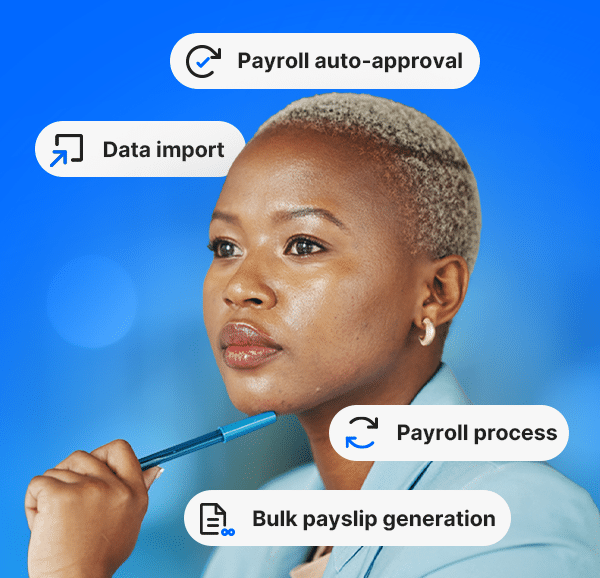Dierk Russell | Senior Business Development Manager, CloudPay
Many organizations see HR Shared Services or People Operations as integral to the success of the HR Delivery model. How successful you are will also depend on your objectives for your operation and the objectives behind using shared services within your HR model.
If we consider some of the main influences on HR evolution over the past years, these range from moving from the HR 1.0 model through to HR3.0 which builds upon the pillars of HR 2.0 and adds layers for digitization and new technology.
HR is being tasked with attracting, developing, and retaining talent with the headwinds of the great resignation, the war on talent, and new working norms.
The scope of your HR shared service centers
Often organizations look at the repetitive, simple, global, and high-volume activities to move into a shared service organization. Being realistic, the number of activities that meet all those criteria in a global organization are relatively small.
There are two main paths that are typically followed from this seeming impasse; either continue by looking at regionalizing shared services or decide to cast the net wider when looking at the scope for your service centers. This may include looking at common technology platforms, and processes that are not entirely owned by HR such as onboarding or payroll or even looking to extend shared services beyond a functional silo.
One of the key elements of designing your shared service offer should be employee or candidate experience. Ask yourself “Am I making this simpler, better, or more accessible than before?”. If the answer to any of those concerns is no”, then the risks associated are potentially low levels of customer or employee satisfaction or a potentially undesirable knock-on effect of high turnover of shared service resources.
If shared services are to be considered as a value-add, then the goal of reducing the administrative burden on your CoE resources or business partners will balance one side of the equation, but the common mistake is to only consider the shift of work from one group to another. There may be some standardization or regularization of tasks, but ultimately the tasks remain the same with a different resource group undertaking the activity.
Your HR shared services strategy
If in the design of your shared services, this was more of a strategy call and the objectives were more on employee experience, reduced time to serve customers, a more enhanced way of doing the same things then these are some of the ingredients for success.
What are the activities that create your employee pain points today? Do they even need to be performed by a person or could they be automated or assisted better with technology? People don’t want answers every time, they want low-value activities to be performed for them. Why not use automation, artificial intelligence, and other technologies widely available? Your shared services team could easily offer above and beyond the tier 1 support traditionally seen as the mainstay of this group.
Why not create a shared services organization to support innovation or career development that creates enthusiasm in your resource groups and supports your internal development objectives to develop your resources to become the next group of specialists and leaders.
Developing resources in this way, creates a great story for the organization of how they invest in their people and create opportunities for career growth. This also allows your employees to keep valuable knowledge within the organization and be valuable in handover and training of other resources.
How important is, and how are you measuring the overall satisfaction of your customers, beyond basic feedback? What is the impact on overall employee experience and how much importance do you place on employee input in the design stages of operational activities you intend to migrate? Many activities you will be migrating may not need as much due diligence, as we often hear from employees that they don’t care where things happen if it is simple to access answers and the responses are timely.
How does payroll fit in?
How do you include payroll as part of your shared service offer? What do you include? These questions are very personal to each organization and of course subject to some local restrictions.
The answers are often a lot broader and numerous when you have a consistent approach to managing your payroll processes, whether internally or with a global payroll provider like CloudPay. In looking at those activities which could migrate, it is often simpler with consistent technology to include these items first and separate out the functional processes which often need more review.
Scope of your people operations
Something that should also be a part of your overall review process is to evaluate the scope of your people operations or SSCs regularly. If a process or activity no longer fits the criteria, then don’t be afraid to move it out or even re-engineer it so that it does fit.
Some of the information used to understand if a process needs to be tweaked or moved out will depend on the effectiveness of your feedback process from your customers and the granularity of the feedback loop. Also, don’t forget to include the feedback from the business leaders for those groups using your services as you will often gain some valuable insights from these groups also and be able to gauge the appetite for further migrations and opportunities.
In summary
Considering a shared service strategy as a one-shot approach is not recommended. HR, payroll and businesses evolve. The functions supporting the objectives of the business also need to evolve to be more relevant and aligned to the changing environments in which we all need to operate.




